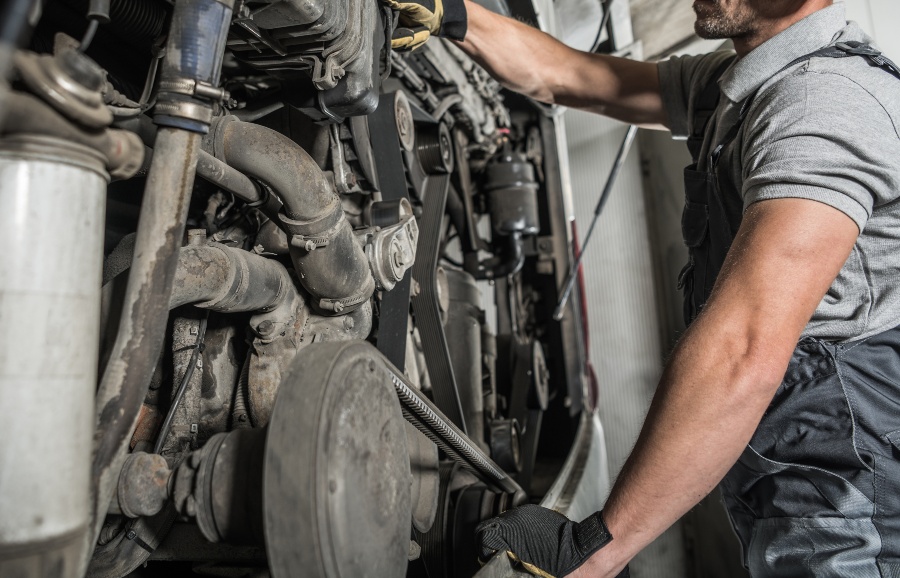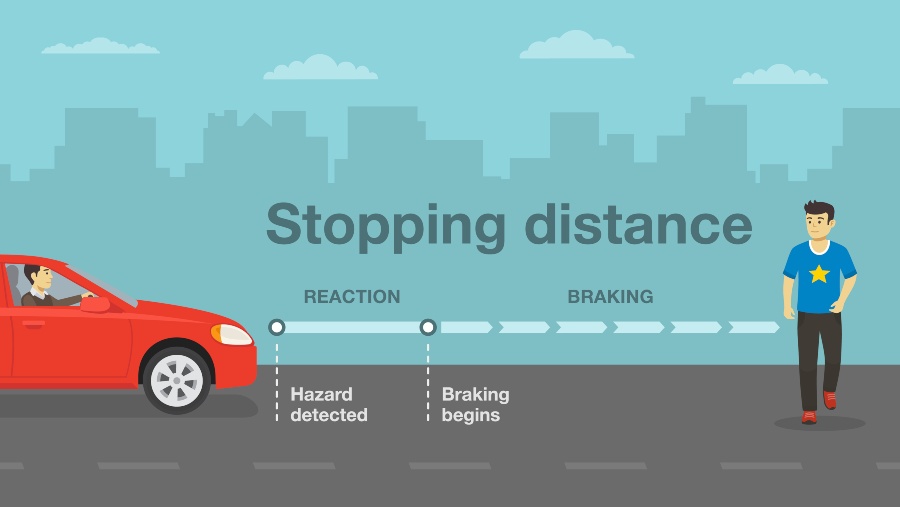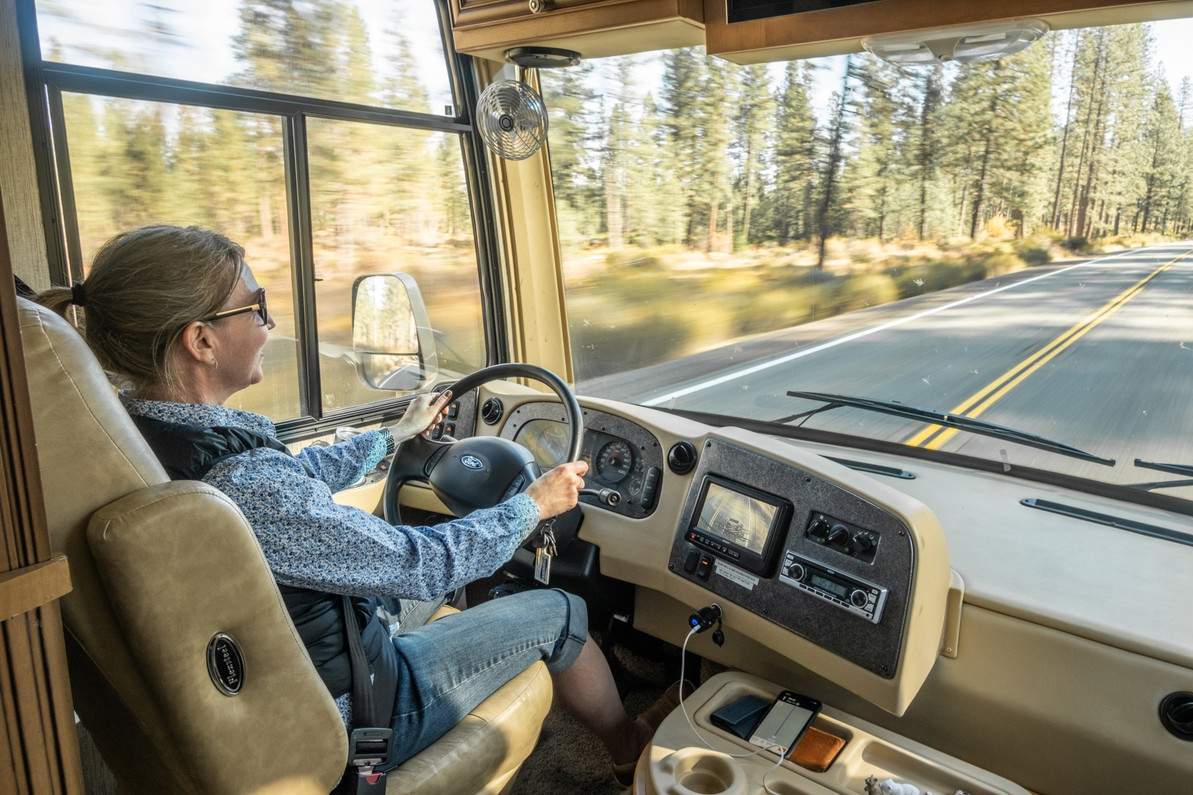RV Driving Tips to Take on the Road
Driving an RV for the first time can be an intimidating experience and may even be why some people decide that RV life isn’t for them. Still, plenty of people out there have gotten over their fear and now feel comfortable behind the wheel of a big rig camper.
If you are the new owner of an RV but are worried about driving, here are some tips to consider before hitting the road.
Get to Know Your RV
RVs are complicated vehicles, and it seems they come with more bells and whistles every year than the previous year. This can be overwhelming, especially if you’ve never operated an RV before. Hopefully, the salesperson who sold you the RV went over the major features, but you may be surprised by what was left out in the sales pitch. In order to feel more comfortable when it’s time to hit the road, you should take some time to get to know your new RV.
Exact Dimensions
 Not only are RVs complicated, but they are also pretty big compared to cars. There may be road restrictions that prohibit you from being able to drive your RV through a particular area because of its size. These restrictions are usually based on a weight limit or lack of overhead clearance for vehicles over a certain height. Knowing the exact dimensions of your car probably isn’t necessary because your weight and height are well below any of these types of restrictions, but this is likely not the case for your RV. In order to avoid confusion and detours on the road, you should know the height and weight of your RV.
Not only are RVs complicated, but they are also pretty big compared to cars. There may be road restrictions that prohibit you from being able to drive your RV through a particular area because of its size. These restrictions are usually based on a weight limit or lack of overhead clearance for vehicles over a certain height. Knowing the exact dimensions of your car probably isn’t necessary because your weight and height are well below any of these types of restrictions, but this is likely not the case for your RV. In order to avoid confusion and detours on the road, you should know the height and weight of your RV.
space
Height
There is a standard maximum height for RVs of 13 feet 6 inches, meaning your RV cannot exceed that height. However, this does not apply to aftermarket additions such as a second air conditioner or radio antenna. When measuring the height of your RV, you are concerned with measuring to the highest point on your RV, which isn’t necessarily the roof and may need to be remeasured if you install any new items up top. See below what can happen if you don’t account for the height of AC units on top of your roof.
Unloaded and Loaded Weight
Road weight restrictions are relatively common, so it is essential to know the weight of your RV at all times. The manufacturer probably provided you with the UVW, which is unloaded vehicle weight, and the GVWR, which is the gross vehicle weight rating. The UVW is your starting point, but you will likely only drive your RV unloaded on your way home from the dealership. The GVWR is the maximum weight your chassis is capable of supporting. The GVWR is important, but again, you likely won’t be traveling at that weight most of the time. The GVW is the gross vehicle weight and will vary depending on how much you are carrying with you on a full tank. You should have an educated estimate of your GVW whenever you are on the road.
Width
The average width of an RV is 8 feet 6 inches, and most toll lanes are typically 11 feet or wider. While height and weight restrictions are most common, it is still helpful to know the width of your RV should you ever find yourself on a narrow pass or single-lane road.
Preventative Maintenance Inspection (PMI)
 A preventative maintenance inspection is a systematic check of equipment to identify any potential issues, which can then be corrected before hitting the road in an attempt to avoid complete equipment failure. This may take a while the first few times, but once you are familiar with the equipment you are checking and develop a routine, PMIs are a quick and easy way to ensure your safety while driving!
A preventative maintenance inspection is a systematic check of equipment to identify any potential issues, which can then be corrected before hitting the road in an attempt to avoid complete equipment failure. This may take a while the first few times, but once you are familiar with the equipment you are checking and develop a routine, PMIs are a quick and easy way to ensure your safety while driving!
Below are some basic things to check on a vehicle before driving it. However, it is a good idea to have an RV maintenance technician who is familiar with the make and model of your rig guide you through a complete PMI to ensure you are checking everything correctly.
Lights
Make sure that your lights are in working order. This includes headlights, taillights, brake lights, hazards, and turn signals. You don’t want to get pulled over for a broken headlight that you could have easily replaced if only you had noticed before leaving.
Tire Pressure
Tire pressure monitoring systems (TPMS) are great, but you should not rely solely on them to determine whether your tires are properly inflated or not. These systems usually only alert you when the tire pressure is well out of range and potentially dangerous. But on any given day, your tire pressure can change based on the ambient temperature and due to driving over time. Under-inflated tires, even if not out of the acceptable range of your TPMS, can negatively impact your fuel efficiency. Especially for long trips in your RV, check your tire pressure before leaving and adjust accordingly. The recommended PSI should be listed directly on the sidewall of the tire.
Coolant & Engine Oil Levels
Engine oil works to lubricate your engine so that it can run smoothly. Coolant, as the name implies, keeps your engine cool and prevents overheating. These are both essential to the health of your engine and require regular inspection, and occasionally will need to be topped off.
Mirrors & Windshield

The mirrors in your RV will likely be a little different than those in your regular car. For one, your RV will not have a rearview mirror! Many RV manufacturers account for this by installing a rearview camera that is on display while driving. This will still help you to see what’s behind you but may take some getting used to. Also, the side mirrors on your RV may have two mirrors on each side instead of one. A flat mirror is used to help you see the immediate sides of your RV, while a convex mirror below it provides a wider view, though everything will appear farther away than it is. Adjust your mirrors before starting your trip.
You should also check your windshield for any cracks as part of your PMI. A tiny crack on your huge windshield may not seem like a big deal, but it can be a safety hazard while driving. Left unattended, a tiny chip in your windshield will eventually become a large crack as the glass expands and contracts in response to the weather.
Batteries
Check your RV batteries to ensure they are charged, properly connected, and free from corrosion or leaks. This includes house batteries as well as engine batteries.
Plan for Longer Travel Times
When planning your next RV adventure, remember that RV travel takes longer than car travel. You will likely be driving a bit slower on the roads and be less able to move through traffic by switching between fast lanes. Also, vehicles of that size will require more of your attention to drive safely, so you will likely get fatigued much faster. Account for this by planning longer rest breaks and shorter stints of non-stop driving. Many RVers have a personal mile limit set for a day of driving and plan their trips based on that. Remember that in an RV, the journey is just as much a part of the trip as the destination, so take your time and enjoy it!
Use Specialty GPS Service for Truckers or Motorhomes
There are specialty GPS services for oversized vehicles that can account for road weight limits, overhead clearances, accessible fuel stations, and more. Some even let you put in your direct dimensions and pre-plan/save your routes. The generic maps app that came pre-installed on your phone can usually get the job done when it comes to traveling locally in your car. Still, if you are exploring the country in a big rig camper, it may be time to consider a more detailed and customizable option that does the difficult work for you.

Practice, Practice, Practice!
If you can drive a car, you can learn to drive a coach, but it will definitely take some time before you feel confident on the road. The best way to gain that confidence is to practice in an open area where you will not be met by other drivers or traffic. Corporate offices or business parks on the weekends are typically good places for this.
Increased Turning Radius
The turning radius of a vehicle describes the smallest circular turn that the vehicle can make and depends on the length of the wheelbase, the width of the front tires, and the steering angle of the front wheels. Vehicles with a small turning radius can make sharp turns more easily than those with a large turning radius.
Regarding RVs, the turning radius will vary depending on the size and class of your camper. Class A motorhomes are the largest option available and have the biggest turning radius. Fifth-wheels and large travel trailers will also have a larger turning radius than you may be used to, but these options at least provide a pivot point at the hitch connection. With these larger vehicles and increased turning radius, some adjustments to your driving technique, especially during right turns, will be necessary.
Practice making turns in an empty parking lot with some cones set out as a course. Pay close attention to the path of your back wheels as you make right and left-hand turns. Adjust accordingly until you feel comfortable with the positioning of your camper during turns. Notice how speed affects your ability to turn (hint: the faster you are going, the more difficult it will be to turn!).
Increased Stopping Distance
 A fully loaded class A motorhome can weigh up to 30,000 pounds, while the average car weighs around 4,156 pounds. The weight of a vehicle is directly related to the brake power required for stopping. Going off of weight alone, the class A motorhome would take 7x as much brake power to stop as compared to an average car.
A fully loaded class A motorhome can weigh up to 30,000 pounds, while the average car weighs around 4,156 pounds. The weight of a vehicle is directly related to the brake power required for stopping. Going off of weight alone, the class A motorhome would take 7x as much brake power to stop as compared to an average car.
The speed at which the vehicle travels when it begins to stop also plays a significant role in the stopping distance. The brake power required to stop a moving vehicle is “square” to its speed. This means that doubling your speed will increase your vehicle’s stopping distance by a factor of four.
A few different types of brakes may be present in RVs and vary based on the size of your vehicle. Most modern vehicles use hydraulic braking systems, which use pressurized fluid to slow down the wheels via friction. For class B and C campers, hydraulic brakes are usually sufficient. A more powerful braking system is often required for larger class A motorhomes. Air assist brakes are typically used for vehicles with a GVWR of 26,000 pounds or greater.
Decreased Acceleration Speed
Similarly to stopping distance, acceleration speed is impacted by vehicle weight. As weight is increased, more force is required to accelerate that object. This is important to remember when you are merging onto a highway or turning into oncoming traffic. Be sure that you have enough room to enter and reach a safe speed before entering traffic.
Identify Blind Spots
Blind spots are areas around your vehicle where it is physically impossible to see from the driver’s seat while looking forward or glancing at mirrors. You should be aware of your blind spots before hitting the road. Luckily, this is easy to do, especially if you have a trusty co-pilot to help you.
With 2 people, identifying blind spots is as easy as having one person in the driver’s seat and one person walking around the motorhome with a way of communicating with each other. The driver should share whether they can or cannot see the person outside as they move to different spots around the rig.
If you travel and drive solo, this process will be a bit more complicated but certainly not impossible! You can use cones or larger objects to set up around your RV and determine what you can and cannot see.
Before You Hit The Road
Once familiar with your RV and how to drive it, you may feel ready to hit the road. Before you do that, there are a few more points to consider as you are packing up to leave.
Distribute Load Evenly
When packing up your camper for a long weekend or family vacation, pay attention to load distribution! Especially for trailers, weight needs to be appropriately distributed so that the vehicle can travel smoothly without swaying or fishtailing. If you are unsure how to load a trailer properly, check out the video below for a more detailed explanation.
Properly Secure Interior & Exterior Features
You don’t want to learn the importance of securing items in a moving vehicle the hard way. Before leaving for a trip, examine your RV for items that are likely to shift during driving. Items like furniture, refrigerator doors, and cabinets are good places to check first. Furniture straps and refrigerator locks are available that are designed specifically for RVs, and cabinets can be kept shut with child safety locks.
Recent Posts
-
Trailer Wiring Guide: How to Wire Your Trailer for Safety and Efficiency
Table of Contents 1. Common Types of Trailer Connectors 2. Trailer Wiring Diagrams: Color Codes and …Aug 20th 2024 -
How to Keep Your Pets Safe While Camping
RVing and camping are a great getaway from the hustle and bustle of work and the city and the day …Jul 2nd 2024 -
Why Replace Your RV Furniture?
You may wonder when is the best time to replace your RV furniture. There is no one right answer t …May 20th 2024 -
Are RV Electric Fireplaces Safe
Being Safe in Your RV with an Electric Fireplace Safety is always going to be one of your highes …Apr 25th 2024 -
How To Install An RV Fireplace
A Warm Addition to Your On-Wheels: The DIY RV Fireplace Installation Guide Many RV enthusiasts a …Apr 25th 2024 -
How To Keep RV Furniture From Peeling
Peeling RV Furniture | Why it Peels and How to Stop it Your RV furniture is a point of pride on …Apr 25th 2024







